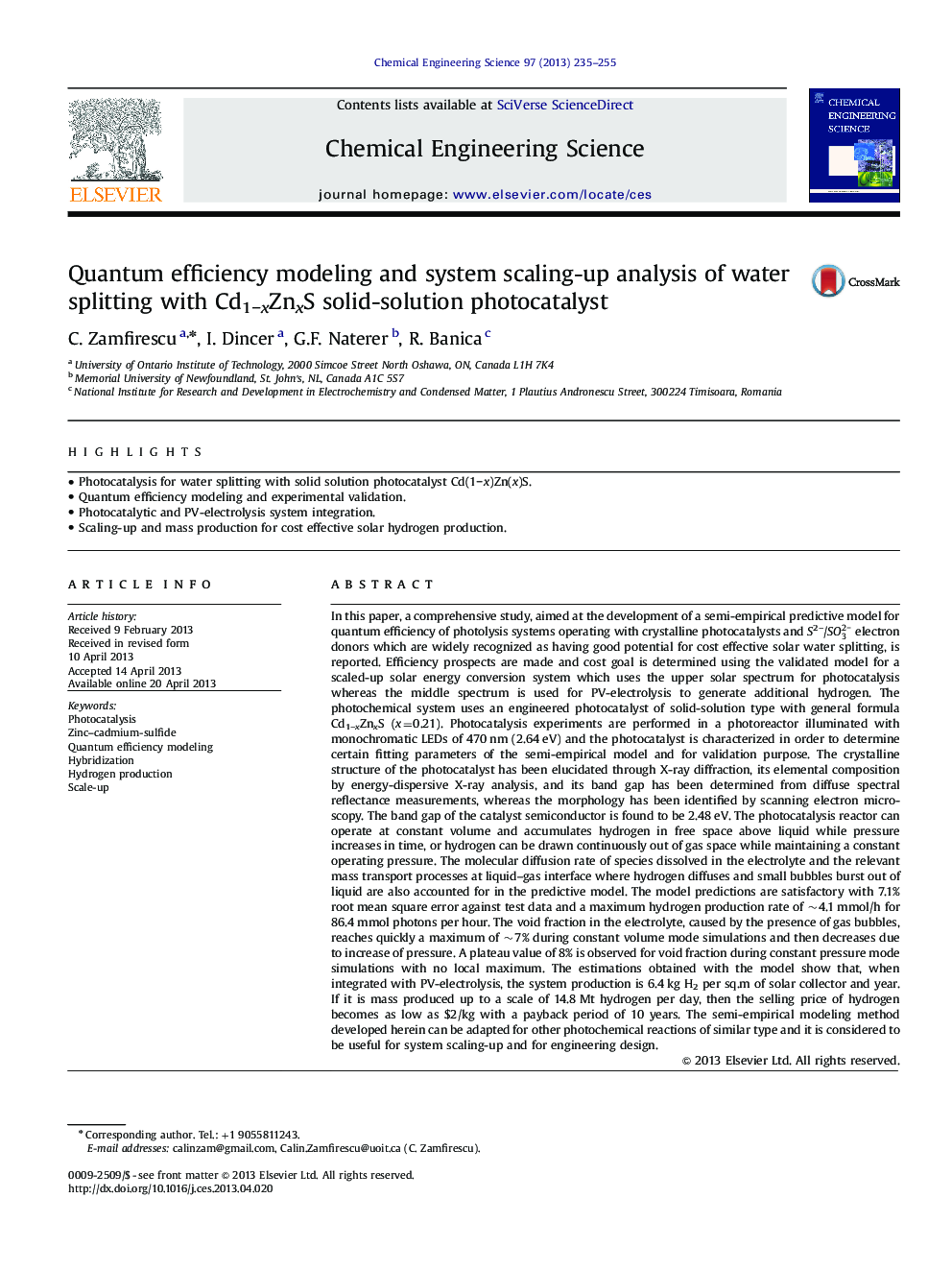| کد مقاله | کد نشریه | سال انتشار | مقاله انگلیسی | نسخه تمام متن |
|---|---|---|---|---|
| 155196 | 456886 | 2013 | 21 صفحه PDF | دانلود رایگان |

• Photocatalysis for water splitting with solid solution photocatalyst Cd(1−x)Zn(x)S.
• Quantum efficiency modeling and experimental validation.
• Photocatalytic and PV-electrolysis system integration.
• Scaling-up and mass production for cost effective solar hydrogen production.
In this paper, a comprehensive study, aimed at the development of a semi-empirical predictive model for quantum efficiency of photolysis systems operating with crystalline photocatalysts and S2−/SO32− electron donors which are widely recognized as having good potential for cost effective solar water splitting, is reported. Efficiency prospects are made and cost goal is determined using the validated model for a scaled-up solar energy conversion system which uses the upper solar spectrum for photocatalysis whereas the middle spectrum is used for PV-electrolysis to generate additional hydrogen. The photochemical system uses an engineered photocatalyst of solid-solution type with general formula Cd1−xZnxS (x=0.21). Photocatalysis experiments are performed in a photoreactor illuminated with monochromatic LEDs of 470 nm (2.64 eV) and the photocatalyst is characterized in order to determine certain fitting parameters of the semi-empirical model and for validation purpose. The crystalline structure of the photocatalyst has been elucidated through X-ray diffraction, its elemental composition by energy-dispersive X-ray analysis, and its band gap has been determined from diffuse spectral reflectance measurements, whereas the morphology has been identified by scanning electron microscopy. The band gap of the catalyst semiconductor is found to be 2.48 eV. The photocatalysis reactor can operate at constant volume and accumulates hydrogen in free space above liquid while pressure increases in time, or hydrogen can be drawn continuously out of gas space while maintaining a constant operating pressure. The molecular diffusion rate of species dissolved in the electrolyte and the relevant mass transport processes at liquid–gas interface where hydrogen diffuses and small bubbles burst out of liquid are also accounted for in the predictive model. The model predictions are satisfactory with 7.1% root mean square error against test data and a maximum hydrogen production rate of ~4.1 mmol/h for 86.4 mmol photons per hour. The void fraction in the electrolyte, caused by the presence of gas bubbles, reaches quickly a maximum of ~7% during constant volume mode simulations and then decreases due to increase of pressure. A plateau value of 8% is observed for void fraction during constant pressure mode simulations with no local maximum. The estimations obtained with the model show that, when integrated with PV-electrolysis, the system production is 6.4 kg H2 per sq.m of solar collector and year. If it is mass produced up to a scale of 14.8 Mt hydrogen per day, then the selling price of hydrogen becomes as low as $2/kg with a payback period of 10 years. The semi-empirical modeling method developed herein can be adapted for other photochemical reactions of similar type and it is considered to be useful for system scaling-up and for engineering design.
Journal: Chemical Engineering Science - Volume 97, 28 June 2013, Pages 235–255